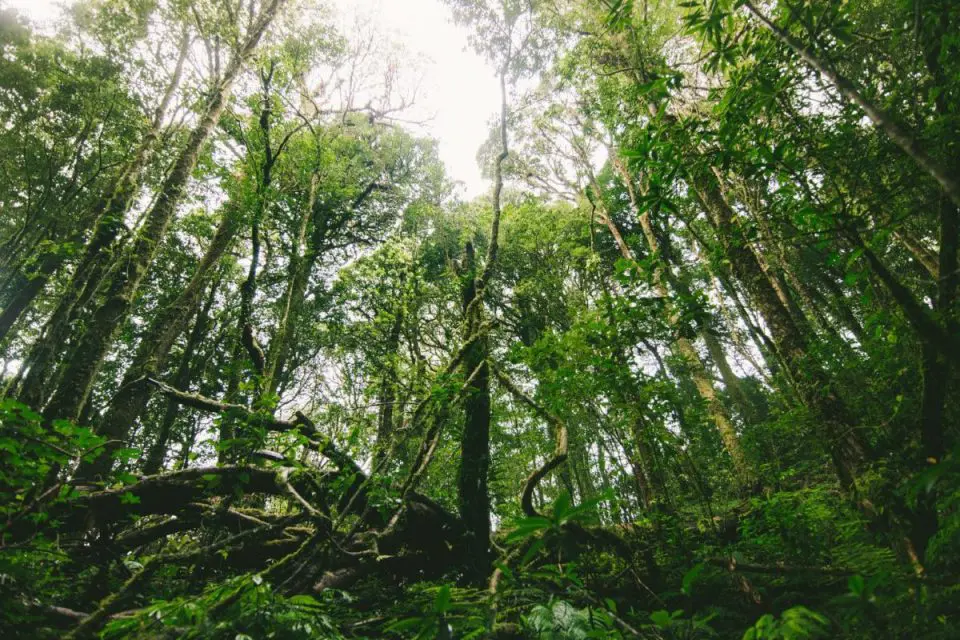KUALA LUMPUR, March 19 — Singer Zainal Abidin Mohamad’s popular number “Hijau” comes to mind when setting foot on the grounds of the Forest Research Institute Malaysia (FRIM) here.
“Bumi yang tiada rimba, seumpama hamba, Dia dicemar manusia, yang jahil ketawa…”(Land without forests can be likened to a slave, defiled by humans who laugh in ignorance…) so goes part of the lyrics.
An oasis of greenery in the city’s concrete jungle, FRIM is situated on a 545-hectare site adjacent to the Bukit Lagong forest reserve in Kepong and it is home to hundreds of plant and tree species, some of which were planted way back in 1925.
From its entrance, a 20-minute walk along the Salleh nature trail (named after well-known forester and conservationist Tan Sri Dr Salleh Mohd Nor who had served as FRIM director-general from 1985 to 1995) will take one to the section where one of this institute’s special attractions, “crown shyness”, can be observed.
Crown shyness is a phenomenon that occurs in the canopies of some tree species whose branches and foliage do not touch each other, thus forming a network of treetop chasms.
In the case of FRIM, the phenomenon is visible among its towering camphor trees (Dryobalanops aromatic) and the treetop’s jigsaw puzzle-like pattern gives the impression that the trees are practising social distancing.
According to FRIM guide Edi Hermi Muhammad Ramli, crown shyness was among the institute’s most well-known attractions and that it has even drawn the attention of the National Geographic Channel.
He said the camphor tree, which has a straight cylinder-shaped trunk, can grow to a height of 60 metres and is supported by its huge buttress roots.
Reduce heat, absorb carbon emissions
FRIM director-general Dr Khali Aziz Hamzah, meanwhile, pointed to the importance of preserving Malaysia’s natural treasures, saying that state governments and local authorities should strive to gazette green lungs in urban areas as forest reserves to tackle temperature increases in various Malaysian cities due to rapid development.
He told Bernama about 12.7 million hectares of forests nationwide have so far been gazetted as forest reserves. A total of 128 areas covering 123 eco-forest parks and five state forest parks have been designated as educational forests.
Khali said the natural environment of forest reserves in urban areas can not only reduce heat but also absorb carbon emissions from vehicles and surrounding factories.
“The trees can also absorb odour and gas pollutants, while the leaves and branches can filter suspended particles in the air,” he said, adding that studies have shown that a 0.4-ha mature forest has the capacity to absorb enough carbon dioxide in a year equivalent to the amount of carbon dioxide produced when driving a car over a distance of 26,000 miles (41,000 km), with each tree having the ability to absorb 21.8 kilogrammes of carbon dioxide a year.
Khali also said that to mobilise greening efforts, the government has embarked on a five-year campaign to plant 100 million trees, starting this year.
“FRIM will give its full support to the state governments and local authorities to make the campaign a success. The campaign will be carried out in line with the basic principle of arboriculture, namely planting the right tree at the right place,” he said.
He said about 20 species of shade and ornamental trees have the potential to be selected as amenity trees for planting in urban areas in Malaysia.
These species include yellow flame tree, penaga lilin or Ceylon ironwood tree, bunga tanjung or Spanish cherry tree and geronggang or Cratoxylum formosum tree
“Trees meant for planting in urban areas can beautify the roadsides and building premises, provide shade, reduce the glare of the sun, bring down the temperature and reduce air pollution,” he said.
Khali also said that the arborist or “tree doctor” plays an important role in ensuring that the newly-planted trees are cared for properly and protected against inclement weather.
Permit
Meanwhile, FRIM, as well as forest reserves nationwide, have been closed to the public since the enforcement of the Movement Control Order in March last year.
Khali said with no visitors entering its grounds for a year now, FRIM’s forests have been attracting wildlife and a variety of birds to help sustain its ecosystem.
Before the MCO, FRIM was a popular weekend destination for the public who would come there for trekking and recreational purposes.
Khali said a permit is required to carry out any trekking, recreational or jogging activity in FRIM or in any forest reserve.
Even FRIM staff have to apply for a permit from the state Forestry Department to carry out research in the forest.
“This procedure is important not only to protect the natural surroundings but also to prevent any untoward incident,” he said, referring to a visitor who got lost whilst trekking in the forest in FRIM two years ago.
He also said that trekkers must take along a certified nature guide with them to ensure their safety and prevent acts of vandalism.
“The guides can also educate the trekkers on how important the forest ecosystem is to human beings. It’s also important to create awareness on the importance of protecting our forests and to avoid taking forest products as it could damage the ecosystem,” he said.
Under Subsection 47 (1) of the National Forestry Act 1984, those convicted of taking forest products without permission face a fine of up to RM10,000 or maximum of three years imprisonment or both, he added.
— Bernama





